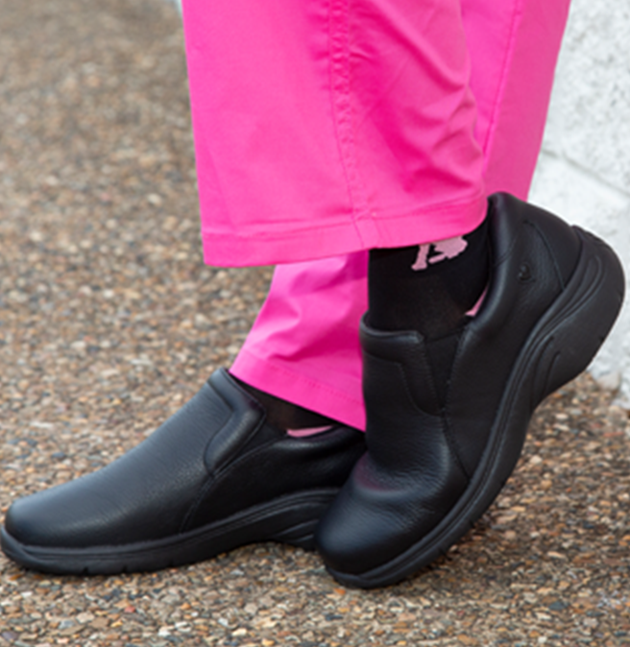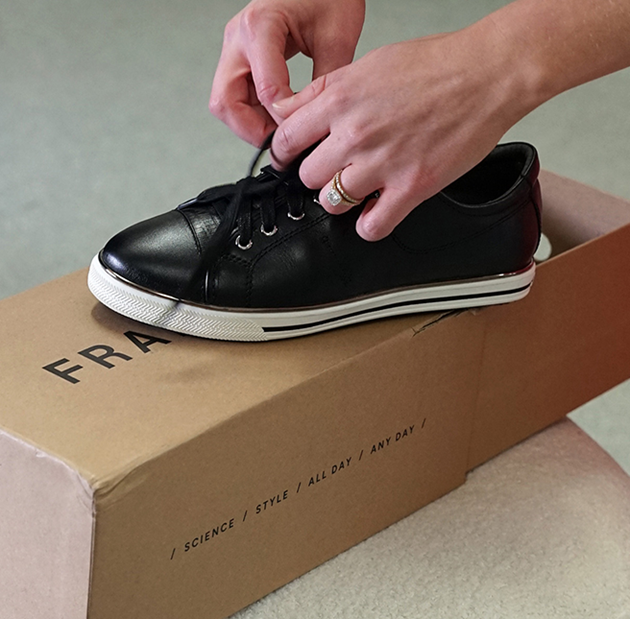Exploring the Importance and Benefits of Proper Nurse Shoes
Nurses have a noble job, caring for people on their worst days, and making sure everything runs smoothly in hospitals and clinics. But this is also a very demanding job that requires spending hours on your feet during long, gruelling shifts. From busy hospital corridors to intensive care units, they walk anywhere from six to ten kilometres in a twelve-hour shift. This speaks of the importance of good shoes. For healthcare workers, footwear is more than just comfort, it’s about preventing injuries, providing support and long-term health.
The Physical Demands of Healthcare Workers

Nurses aren’t just walking, they are rushing between patient rooms, navigating tight spaces, and moving quickly during emergencies. These constant movements put enormous pressure and strain on their feet, ankles, knees and back. Without proper footwear, healthcare workers risk developing pain, fatigue, and serious spine issues. Wearing comfortable and supportive nursemaid shoes can prevent these issues and improve performance on the job.
What Are the Best Shoes to Wear as a Nurse?
What makes a pair of shoes suitable for nurses, and for anyone else who spends long hours on their feet for that matter? Here are some essential features nurses look for in footwear:
Support and Cushioning
Comfort is paramount, but not the only consideration. The nurse work shoes need to provide excellent arch support and distribute weight evenly. This, in turn, reduces the stress on the feet and legs, preventing foot pain. A good pair of nurse shoes should also have enough cushioning to absorb the shock of constant walking and standing on hard hospital floors. Look for options with foam insoles or specialised cushioning technologies, such as removable insoles that mould to your foot or Arch Fit®.
Slip Resistance
Hospitals and healthcare facilities often have slippery floors due to spills and other hazards. This makes shoes with reliable traction a must. Rubber outsoles with tread patterns designed for good grip can prevent accidents and possible injuries. Many healthcare facilities even have strict requirements about shoe grips to prevent workplace accidents.
Breathability
Working in a fast-paced environment and having your feet in shoes for more than ten hours will inevitably lead to hot and sweaty feet. This means that breathable materials that allow air circulation, like mesh or leather, are essential. They can prevent discomfort and potential fungal infections.
Lightweight Materials
Weight matters too. Heavy shoes can add to the fatigue, so look for options made from lightweight materials. Leather offers durability, while synthetic materials provide lighter weight and better breathability. Many nursemaid shoes combine the support of medical shoes with the comfort of running shoes.
Easily to Clean
Messes and spills are a given in healthcare, but so is hygiene. The best nursing shoes are easy to clean and sanitise whatever the material, as these environments demand impeccable hygiene. Some designs feature water-resistant upper materials for added protection.
Design Considerations
Closed-toe designs are often preferred in medical settings, simply because they offer better protection against spills and accidental drops. A wider toe box is also a good option for people with wider feet or those who want extra comfort. The slip-on style is popular because it allows wearers to quickly put them on or take them off. Consider your foot type as well. Do you have flat feet, high arches, or wide feet? Knowing your foot type will allow you to make a better decision.
Different Types of Shoes for Nurses
Nurse shoes come in a variety of styles, with athletic-style like tennis or running shoes and clogs as the most popular. The first options offer a high level of support and cushioning, a good grip and a wide choice of designs. On the other hand, clogs are well-known for their comfortable fit and easy-to-clean materials. The downside is their open-back design which can potentially pose a tripping hazard and the lack of support for people with foot issues. When making a decision, consider both options and choose according to the specifics of your working environment.
Emerging Trends in Nurse Footwear
The shoe market has recognised the need for footwear specifically designed for the needs and preferences of medical professionals, so we can see significant innovations in modern designs. More models incorporate advanced ergonomic features and shoes with enhanced energy return technology that helps reduce fatigue during long shifts.
Health Benefits of Proper Footwear
Investing in high-quality nursing shoes extends beyond immediate comfort. It supports long-term health, reducing the risk of plantar fasciitis and painful inflammations. Good shoes also minimise lower back pain, and knee stress, and improve overall posture. A well-designed shoe can reduce fatigue, improve circulation, and even help prevent workplace injuries. For nurses, these are primary work tools, just like their stethoscopes or other instruments.
Final Words

Choosing the right shoes is an important decision for anyone who is working in the healthcare industry. A great pair can transform those long shifts, providing comfort, protection, and support you need, so you can deliver exceptional patient care. Focus on the features that matter, consider your foot type, and choose shoes that will support you in taking on whatever challenges come your way.